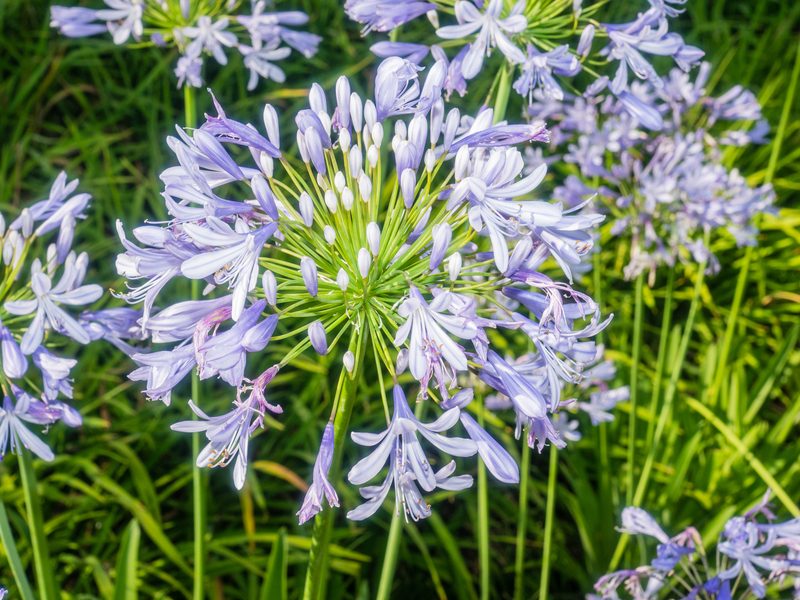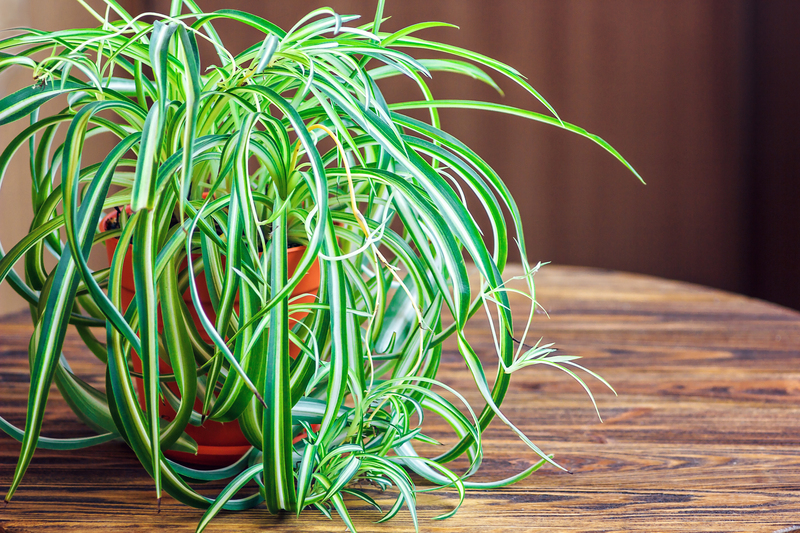How to Design an Engaging Garden for Children
Posted on 16/06/2025
How to Design an Engaging Garden for Children
Creating a child-friendly garden is an exciting opportunity to nurture your child's curiosity, creativity, and connection with nature. A well-designed garden for children doesn't just encourage outdoor play; it fosters lifelong learning and a love for the environment. In this comprehensive guide, we will explore how to design an engaging garden for children, offering inspiring ideas, practical tips, and essential elements to transform your space into a magical haven for young minds.
Why Build a Garden for Children?
Before delving into the design process, it's helpful to understand the many benefits kids gain from spending time in a garden tailored just for them:
- Sparks Curiosity: Children naturally explore and learn through observation, experimentation, and hands-on activities.
- Promotes Physical Activity: Gardening encourages running, digging, climbing, and active play--essential for growing bodies.
- Cultivates Responsibility: Taking care of plants and garden creatures builds a sense of stewardship and responsibility.
- Boosts Sensory Development: A garden is a feast for all five senses, stimulating observation, touch, smell, hearing, and taste.
- Encourages Creativity: Kids can use their imagination to create, build, and invent amidst natural surroundings.
- Fosters Family Bonding: Gardening projects give families a chance to work, laugh, and learn together outdoors.
With these benefits in mind, let's dive into the steps of designing an engaging children's garden.

Step-by-Step: How to Design an Engaging Garden for Kids
1. Assess Your Space
Begin by evaluating your garden space. Whether you have a sprawling backyard or a modest patio, you can create a child-friendly garden design. Consider:
- Sunlight and Shade: Observe which parts get morning sun, afternoon light, or are shaded all day.
- Soil Quality: Test or inspect the soil type and drainage.
- Safety Concerns: Identify and plan to address hazards such as ponds, sharp tools, toxic plants, or uneven ground.
2. Involve Children in the Planning
Including your children in garden design makes it more meaningful and fun. Let them share their favorite flowers, colors, or themes. Ask:
- "What do you want to grow?"
- "Do you want a spot for reading or a space for digging?"
- "What creatures would you like to attract--birds, butterflies, frogs?"
Sketch out ideas together and let your kids help decide major features and favorite activities.
3. Choose a Theme or Multiple Zones
A themed garden adds excitement and cohesion to your design. Here are some popular children's garden themes:
- Fairy or Magical Garden: Add miniature houses, toadstools, and sparkling stones.
- Edible Wonderland: Grow strawberries, cherry tomatoes, peas, or herbs children can snack on.
- Butterfly and Bee Haven: Fill with pollinator-friendly plants like lavender, sunflowers, and milkweed.
- Dinosaur Dig Area: Bury faux fossils, create a sandy excavation pit, and add "prehistoric" plants like ferns.
- Music & Sensory Garden: Hang wind chimes, add textured leaves, aromatic herbs, or musical stepping stones.
You can also divide your garden into multiple zones--one for growing food, another for imaginative play, and another for quiet reflection.
4. Incorporate Fun and Interactive Features
The most engaging gardens for children are those that invite exploration and hands-on activities. Consider adding:
- Digging Beds: Set aside a patch for digging, planting, and "mud kitchen" play.
- Hidden Paths: Winding paths lined with tall grasses or sensory plants encourage adventure.
- Secret Hideouts: Teepees, willow domes, or simple tents offer cozy spaces for reading or quiet time.
- Climbing and Balance Structures: Simple logs, boulders, or a wooden climbing frame promote active play.
- Water Features: A bird bath, mini pond, or even a simple sprinkler for hot days can be magical for kids (with safety always in mind).
- Art and Building Stations: Outdoor blackboards, stone painting stations, or a "loose parts" area with natural materials for creative play.
5. Select Safe, Sensory-Friendly Plants
The right plants make all the difference in a children's garden. Focus on:
- Non-toxic, child-safe species: Avoid toxic plants like foxglove, oleander, or castor bean.
- Sensory engagement: Choose plants with interesting textures (lamb's ear), scents (mint, lemon balm), or tastes (berries, cherry tomatoes).
- Seasonal variety: Incorporate flowers for each season to keep the garden changing and interesting year-round.
- Pollinator attractors: Attract butterflies, bees, and birds with sunflowers, milkweed, and salvia.
6. Make It Accessible and Safe
- Wide, level paths: If possible, lay down mulch, wood chips, or flat stones for easy navigation.
- Define borders: Use logs, stones, or low fences to separate child-friendly zones from fragile plants.
- Shade structures: Trees, pergolas, or large umbrellas protect delicate skin on sunny days.
- Safe tools: Provide age-appropriate, lightweight tools for digging, watering, and planting.
- Supervision: Always ensure children are supervised, especially around water or uneven ground.
Planting Ideas for a Child-Centric Garden
Easy-to-Grow Picks
Children's gardens thrive when filled with plants that sprout quickly, are easy to harvest, and inspire delight. Top picks include:
- Sunflowers: Tall and cheery; children love watching them race to the sky.
- Snapdragons: Colorful and fun to "snap" open.
- Nasturtiums: Edible flowers and leaves with a peppery taste.
- Pumpkins and Gourds: Large seeds are easy for little hands to sow.
- Sugar Snap Peas: Sweet and perfect for eating fresh off the vine.
- Radishes: Quick to harvest, offering fast results for impatient gardeners.
- Strawberries: Delicious, easy to pick, and a real treat.
- Marigolds: Pest-resistant and easy to grow.
Sensory Plant List
- For Touch: Lamb's ear, moss, ferns, ornamental grasses
- For Smell: Lavender, mint, lemon balm, sweet alyssum
- For Sound: Bamboo (rustling), ornamental grasses, seed pods
- For Sight: Bright zinnias, cosmos, ornamental kale
- For Taste: Herbs, berries, edible flowers
Practical Gardening Tips for Kids
- Use Raised Beds or Containers: Great for patios or areas with poor soil--and easier for kids to reach.
- Label Everything: Help kids learn plant names by making whimsical, hand-painted plant markers.
- Start Small: Begin with a few simple crops and expand as your child gains confidence and interest.
- Celebrate Successes: Mark growth milestones, harvests, and new blooms with photos, garden journals, or a garden scrapbook.
- Make Time for Play: Not all time in the garden should be "work." Allow for free play and spontaneous exploration.
Garden Activities to Engage Children All Year Round
Keeping your children's garden engaging means providing year-round activities. Try these fun, educational ideas:
- Spring: Plant seeds, hunt for worms, build bug hotels, design fairy houses.
- Summer: Water play, scavenger hunts, picking berries, flower pressing.
- Autumn: Collect leaves, harvest pumpkins, plant bulbs for spring, composting.
- Winter: Make bird feeders, look for animal tracks, plan next year's crops, paint plant pots indoors.
Safety First: Essential Garden Precautions
While designing a child-friendly garden, always take proactive steps to keep children safe:
- Supervise: Children should never be left unsupervised, especially near water features or garden tools.
- Secure Tools and Chemicals: Store all sharp tools, fertilizers, and pesticides out of reach.
- Educate: Teach your kids which plants are safe and which ones to avoid.
- Install Fencing: Use fencing or hedges to set clear, safe boundaries--especially in open yards or near streets.
- Teach Respect for Wildlife: Encourage gentle observation of garden creatures, guiding children not to disturb nests or harm insects.
Eco-Friendly and Sustainable Garden Ideas
Inspire the next generation of environmental stewards with eco-friendly gardening approaches:
- Composting: Set up a simple bin and teach kids how to compost food scraps and leaves.
- Rainwater Harvesting: Collect rainwater in a barrel for watering plants, showing the value of conservation.
- Native Plants: Prioritize regional plants that attract local pollinators and require less water.
- Wildlife Habitats: Build bug hotels, bee houses, or pile logs and stones for critter homes.
- Recycled Materials: Use reclaimed wood, painted tires, or upcycled containers for beds and features.
Final Touches: Bringing the Garden to Life
- Personalize Spaces: Allow children to decorate their own "corner" with painted rocks, fairy lights, or homemade signs.
- Include Seating: Add small benches, hammocks, or picnic tables for resting, picnicking, or reading.
- Invite Wildlife: Add bird feeders, butterfly puddling spots, or ladybug houses to keep the garden bustling with life.
- Rotate Features: Swap out play features or add seasonal decorations to keep the garden feeling fresh and exciting.

Frequently Asked Questions: Designing a Garden for Children
-
What is the best age to introduce children to gardening?
Children as young as two can participate in garden activities with supervision, but older kids can take more active roles in planning, planting, and maintenance. -
How do I keep a children's garden low-maintenance?
Choose easy-to-grow, hearty plants, mulch liberally, utilize raised beds or containers, and focus on perennial species for long-lasting color and interest. -
Can I create a kids' garden in a small space?
Absolutely! Use containers, vertical gardens, or window boxes. Even a sunny balcony or courtyard can become a thriving green retreat.
Conclusion: Growing Memories and Imagination
A well-designed engaging garden for children is more than just a play area--it's a living classroom, a sanctuary for exploration, and a place where family memories are cultivated alongside the plants. By prioritizing safety, sensory engagement, and child participation, you can create a garden that sparks wonder and joy every day.
Now is the perfect time to start designing your own children's garden. Gather your young gardeners, dream big, and let your backyard bloom with discovery, laughter, and learning.
Start your journey! With these tips on how to design an engaging garden for your children, you'll sow seeds that will blossom for years to come.

